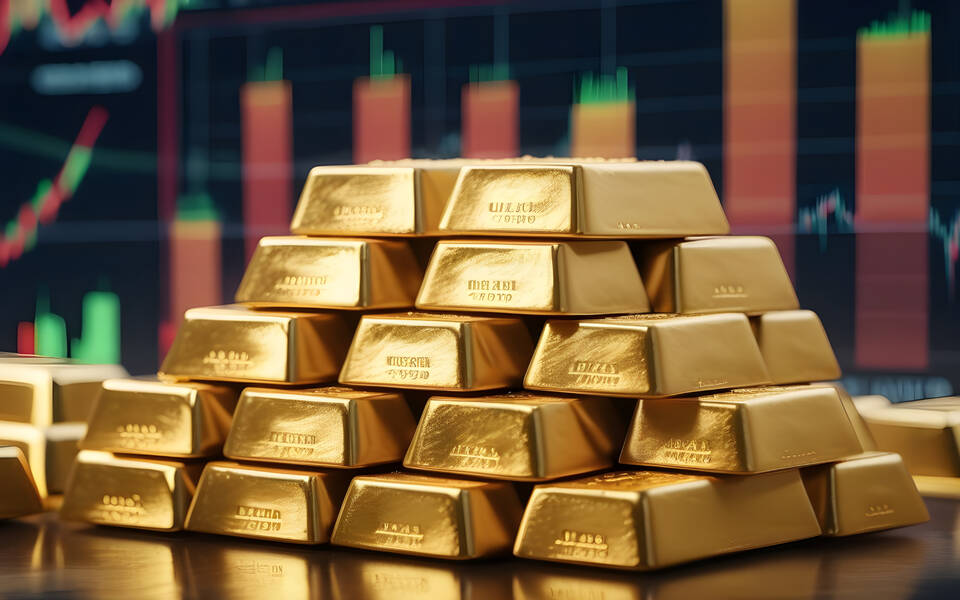Central Banks at Crossroads: Fighting Inflation vs. Supporting Economy
The major central banks will walk different paths in 2022. Some will respond to the threat of inflation, while others will continue to focus on boosting economic growth and recovering from the pandemic.
Policymakers will enter the new year with a cautious tread. Acting quickly to control prices may kill the economic expansion, especially if inflation subsides on its own. On the other hand, waiting for a longer period to secure the recovery may speed up inflation, and will require stronger and more severe measures later.
Federal Reserve
The Fed has chosen to respond to inflation, as it is no longer appropriate to call it "transitional", and will lead the tightening team.
Fed Chairman Jerome Powell will start raising interest rates as soon as possible, at the March meeting. The US economy is facing the highest inflation rate in nearly 40 years.
The US central bank is moving quickly to withdraw stimulus from the markets. With the economy recovering and becoming strong, the Fed doubled down on its plans to reduce bond purchases from $15 billion per month to $30 billion per month, after noting that continued stimulus was prompting inflation to rise.
At this rate, the Fed will end its bond-buying program by March. Fed officials set to hike rates 3 times at a quarter-point each time during 2022, forecasting inflation and the unemployment rate to drop around 3.5% by the end of the year.
Bank of England
Britain became the first economy in the G7, which has raised interest rates since the beginning of COVID-19, even before the Fed.
The Bank of England has raised rates to 0.25% from 0.1%, as inflation is expected to jump to 6% in April, three times double the bank's goal.
Traders are betting that BoE will follow a series of rate hikes, the sharpest in three decades. They expect BoE to raise rates to 0.5% at the next February meeting. The market believes that the benchmark rate will reach 1% by November.
European Central Bank
While the Fed and BoE should go with tightening, the ECB prefers to continue the stimulus.
The ECB has announced plans to boost its bond purchases and provide more stimulus and liquidity for European economies. European countries are waiting for stimulus because many are subject to severe lockdown restrictions because of omicron. However, ECB plans include reducing bond purchases in March.
While inflation has pushed the Fed and BoE to shift policies, ECB President Christine Lagarde said that the pandemic has again resulted in reducing spending in the euro area and threatening growth.
ECB has ruled out any rate hikes during 2022. The bank has confirmed that it’ll follow the most relaxed point of view over inflation. ECB has also pointed out that exiting years of easing politics will be slow.
Bank of Japan
The Bank of Japan will remain far away from tightening and raising rates, as it sees no inflation.
Japan did not have the same kind of demand for products and goods as other countries. Japanese do not see wage increases such as American workers. In Japan, it is difficult to change jobs, so there is less pressure to increase wages to attract workers or keep skilled talent. As a result, inflation is still low in Japan. Corporates that raise prices tend to lose customers quickly.
BoJ will reduce debt purchases at the end of March and will take gradual steps to reduce pandemic support. Japan is expected to reduce economic stimulus at a much slower pace than other countries.
In 2022, the Bank of Japan will shift gradually from pandemic support to attempt to increase inflation to 2%, which is barely stable above 0%.
People’s Bank of China
As for China, we expect it to cut rates this year while trying to cushion the slowdown in economy No. 2 in the world.
In 2022, the great decoupling between Washington and Beijing will reach its peak, after the trade, financial, and technology sectors already hit. The central banks will walk opposite ways, with the Fed beginning a tightening cycle, while the PBOC will begin to pump stimulus.
Finally, the economic world is divided into separate regions led by major central banks and their conflicting policies this year. This is a new dynamic for markets and an unknown land where they do not know how to move. All things equal, higher rates are positive for currencies, while the stimulus is negative. As a result, the USD may be the strongest currency this year.
